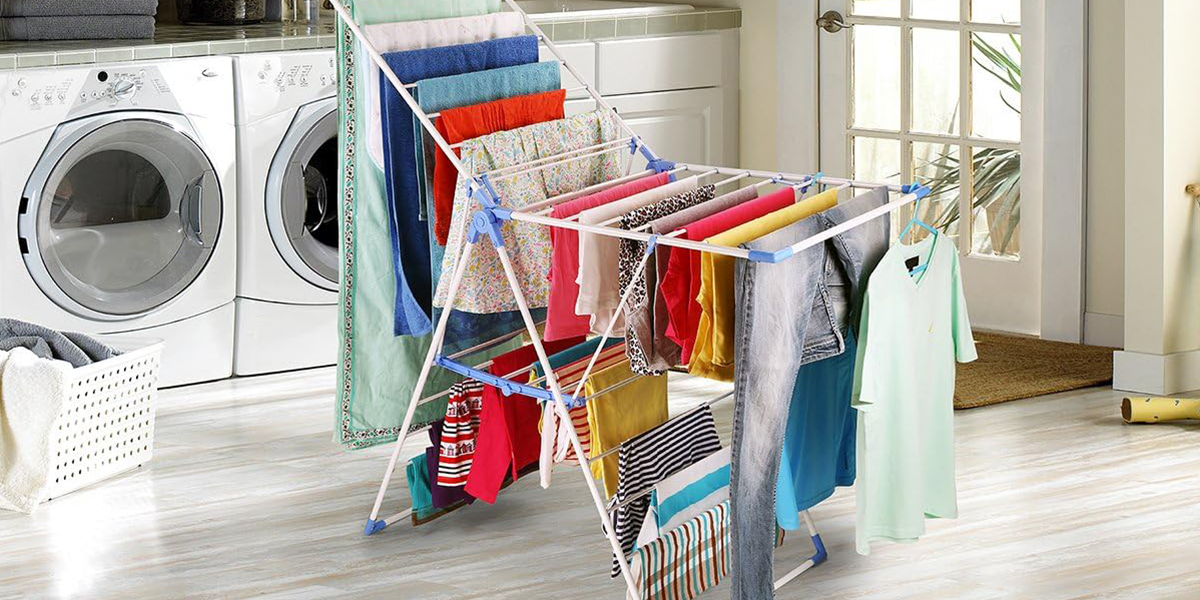Can a Dehumidifier Dry Clothes? Here’s What You Need to Know

If you’ve ever been caught in a rainy spell or don’t have access to a tumble dryer, drying clothes indoors can feel like a challenge. Many people ask, “Can a dehumidifier dry clothes?” The short answer is yes, but with some nuances.
A dehumidifier can help accelerate the drying process by reducing the humidity in your space, but it doesn’t quite work the same way as a tumble dryer. Let’s dive into how a dehumidifier can help, and the benefits it brings to drying clothes.
How Do Clothes Dry? Understanding the Basics
Outdoor Drying: Sunshine vs. Shade
Naturally, clothes dry faster in the sun because the heat speeds up the evaporation process, drawing moisture out of the fabric quickly. However, some clothes (especially delicates) do better in the shade, where direct heat won’t risk damaging them, and airflow can help remove moisture at a gentler pace.
Indoor Drying: Traditional vs. Dehumidifier-Assisted Drying
When drying clothes indoors, you typically rely on natural airflow or the heat from a radiator. However, indoor drying often takes longer because without adequate ventilation, moisture remains trapped in the room, slowing the drying process.
This is where a dehumidifier can make a significant difference. By reducing the moisture in the air, a dehumidifier accelerates the drying process, especially in damp or poorly ventilated rooms.
Why Wet Clothes Can Develop an Unpleasant Smell in Humid Conditions
In damp conditions, your clothes may develop unpleasant odors. This happens because high humidity levels provide an ideal environment for bacteria and mold to thrive. When clothes are unable to dry quickly, they become a breeding ground for these microorganisms, causing that familiar musty smell.
The issue is especially problematic when clothes are dried in poorly ventilated areas. If humidity is high and there’s insufficient airflow, the moisture can’t escape quickly enough, and the clothes stay damp. This allows bacteria and mold to grow, leading to unwanted odors.
How a Dehumidifier Can Help Dry Clothes Faster and More Effectively
Dehumidifier’s Role:
A dehumidifier works by removing excess moisture from the air. This helps lower the overall humidity in the room, making it easier for water in clothes to evaporate faster. When the air is drier, moisture from your clothes can leave the fabric more efficiently, speeding up the drying process.
Benefits for Clothes Drying:
-
Faster Drying: A dehumidifier helps create the ideal drying environment by absorbing the moisture in the air. This allows your clothes to dry much quicker compared to relying on natural evaporation in a humid room.
-
No Musty Smells: As a dehumidifier reduces moisture levels, it also reduces the chances of bacteria and mold growth, preventing that unpleasant musty odor that can occur when clothes are left damp too long.
-
Energy-Efficient: Using a dehumidifier consumes less energy compared to traditional tumble dryers, saving you money on electricity bills in the long run.
Common Concerns: Will a Dehumidifier Actually Dry Clothes Completely?
What a Dehumidifier Can and Can’t Do:
While a dehumidifier can speed up the drying process by removing moisture from the air, it doesn't dry clothes in the same way a tumble dryer does. A dehumidifier doesn’t apply heat to the clothes; it simply creates the right environment for water to evaporate naturally.
Dehumidifier vs. Tumble Dryer:
-
Dehumidifier: Uses moisture removal to speed up drying, is energy-efficient, and prevents musty odors.
-
Tumble Dryer: Uses heat and airflow to dry clothes more quickly but consumes more energy. It's generally faster than a dehumidifier but can be harsh on fabrics over time.
A dehumidifier can be a more gentle and energy-efficient way to dry clothes, especially in a room where a tumble dryer isn't available or practical.
Practical Tips for Using a Dehumidifier to Dry Clothes Effectively
Setting up the Dehumidifier:
For optimal results, place the dehumidifier in the room where your clothes are drying. Position it near the clothes but not too close, as concentrated moisture could form. Ensure that windows and doors are closed so that the dehumidifier can work effectively in a controlled environment.
Maximizing Effectiveness:
-
If possible, use a fan to help circulate air throughout the room.
-
Keep windows and doors closed to maintain the dry environment.
-
Avoid overcrowding the room with clothes. Too many garments in one space can slow down the drying process, as there won’t be enough air circulation around each piece.
Why Choose Newentor Dehumidifiers for Your Drying Needs?
Key Features of Newentor Dehumidifiers:
-
Efficient Moisture Removal: Newentor dehumidifiers excel at reducing humidity levels, creating the perfect drying environment for clothes, towels, and other fabrics.
-
Energy Efficient: Designed to work efficiently, Newentor dehumidifiers help you save on energy costs while offering long-lasting performance.
-
Quiet Operation: Many Newentor models are designed to operate quietly, making them suitable for both day and night use.
Health Benefits:
-
Improved Air Quality: By removing excess moisture from the air, Newentor dehumidifiers also help to reduce allergens and mold, creating a healthier indoor environment.
-
Prevent Mold and Mildew: Consistent use of a dehumidifier helps prevent the growth of mold and mildew, which thrive in damp environments.
Conclusion:
A dehumidifier is an ideal tool for speeding up the drying of clothes, particularly in rooms with high humidity. While it’s not a direct replacement for a tumble dryer, it can make a noticeable difference in indoor drying, preventing musty smells and improving air quality. If you're looking for a cost-effective and gentle way to dry clothes indoors, investing in a Newentor dehumidifier can offer the perfect solution.





Leave a comment